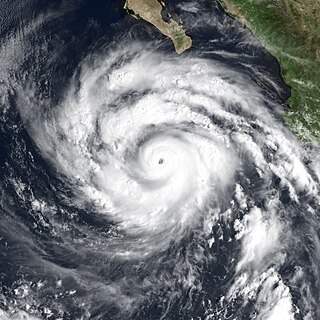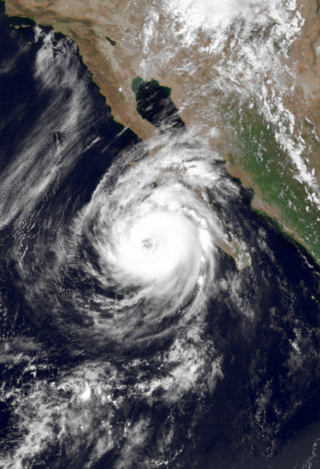
Madeira,officially the Autonomous Region of Madeira,is an autonomous region of Portugal. It is an archipelago situated in the North Atlantic Ocean,in the region of Macaronesia,just under 400 kilometres (250 mi) north of the Canary Islands —Spain—,520 kilometres (320 mi) west of the Kingdom of Morocco and 805 kilometres (500 mi) southwest of mainland Portugal. Madeira sits on the African Tectonic Plate,although it is culturally,politically and ethnically associated with Europe,with its population predominantly descended from Portuguese settlers. Its population was 251,060 in 2021. The capital of Madeira is Funchal,on the main island's south coast.

The Savage Islands or Selvagens Islands are a small Portuguese archipelago in the North Atlantic Ocean,280 kilometres (175 mi) south of Madeira and 165 kilometres (105 mi) north of the Canary Islands. The archipelago includes two major islands,Selvagem Grande and Selvagem Pequena,each surrounded by a cluster of islets and reefs,with the total area of 2.73 km2 (1.05 sq mi). The archipelago is administered as part of the Portuguese municipality of Funchal,belongs to the Madeiran civil parish of Sé,and is the southernmost point of Portugal.

Pineapple Express is a specific recurring atmospheric river both in the waters immediately northeast of the Hawaiian Islands and extending northeast to any location along the Pacific coast of North America. It is a non-technical term and a meteorological phenomenon. It is characterized by a strong and persistent large-scale flow of warm moist air,and the associated heavy precipitation. A Pineapple Express is an example of an atmospheric river,which is a more general term for such relatively narrow corridors of enhanced water vapor transport at mid-latitudes around the world.

Hurricane Linda was an extremely powerful tropical cyclone that was,at the time,the most intense eastern Pacific hurricane on record,until it was surpassed 18 years later by Patricia. Forming from a tropical wave on September 9,1997,Linda steadily intensified and reached hurricane status within 36 hours of developing. The storm rapidly intensified,reaching sustained winds of 185 mph (295 km/h) and an estimated central pressure of 902 millibars (26.6 inHg);both were records for the eastern Pacific until Hurricane Patricia surpassed them in 2015. The hurricane was briefly forecast to move toward southern California,but instead,it turned out to sea and lost its status as a tropical cyclone on September 17,before dissipating on September 21. Linda was the fifteenth tropical cyclone,thirteenth named storm,seventh hurricane,and fifth major hurricane of the 1997 Pacific hurricane season. Linda was also the most intense tropical cyclone worldwide in 1997.

The history of Madeira begins with the discovery of the islands by Portugal in 1419. There is no record of anyone living on the islands at that time. Portugal began populating the island in 1420.

Madeira Airport,informally Funchal Airport,formerly Santa Catarina Airport and officially Cristiano Ronaldo International Airport,is an international airport in the civil parish of Santa Cruz in the Portuguese archipelago and autonomous region of Madeira. The airport is located 13.2 km (8.2 mi) east-northeast of the regional capital,Funchal,after which it is sometimes informally named. It mostly hosts flights to European metropolitan destinations due to Madeira's importance as a leisure destination,and is pivotal in the movement of cargo in and out of the archipelago of Madeira. It is the fourth-busiest airport in Portugal. The airport is named after Madeiran native Cristiano Ronaldo,considered one of the greatest footballers of all time. During its renaming ceremony in 2017,the airport drew media notoriety for an infamous bust of Ronaldo unveiled at the ceremony,now replaced.

Hurricane Lester was the first Pacific tropical cyclone to enter the United States as a tropical storm since 1967. The fourteenth named storm and eighth hurricane of the 1992 Pacific hurricane season,Lester formed on August 20 from a tropical wave southwest of Mexico. The tropical storm moved generally northwestward while steadily intensifying. After turning to the north,approaching the Mexican coast,Lester attained hurricane status. The hurricane reached peak winds of 85 mph (137 km/h) before making landfall on west-central Baja California. The system weakened while moving across the peninsula and then over northwestern Mexico. Not long after entering Arizona,Lester weakened to a tropical depression,and degenerated into an extratropical low on August 24,1992,over New Mexico. The storm's remnants later merged with the remnants of Hurricane Andrew and another frontal system on August 29.

SA de Transport Aérien Flight 730 was a Sud Aviation SE-210 Caravelle 10R aircraft,registered as HB-ICK,that crashed on approach to Funchal Airport,Madeira,on December 18,1977.

The April 2010 Rio de Janeiro floods and mudslides was an extreme weather event that affected the State of Rio de Janeiro in Brazil in the first days of April 2010. At least 212 people died,161 people have been injured,while at least 15,000 people have been made homeless. A further 10,000 homes are thought to be at risk from mudslides,most of them in the favelas,the shanty towns built on the hillsides above downtowns. Damage from the flooding has been estimated at $23.76 billion reais,about 8% of the gross domestic product (GDP) of Rio de Janeiro State.

The global weather activity of 2010 includes major meteorological events in the Earth's atmosphere during the year,including winter storms,hailstorms,out of season monsoon rain storms,extratropical cyclones,gales,microbursts,flooding,rainstorms,tropical cyclones,and other severe weather events.

Hurricane Rafael was a long-lived category 1 hurricane that produced minor damage in the northeastern Caribbean Sea in mid-October 2012. The seventeenth named storm and ninth hurricane of the 2012 hurricane season,Rafael originated from a tropical wave roughly 230 mi (370 km) south-southeast of Saint Croix on October 12;because the system already contained tropical storm-force winds,it skipped tropical depression status. Though initially disorganized due to moderate wind shear,a subsequent decrease allowed for shower and thunderstorm activity to develop in earnest by October 14,2012. While moving north-northwestward the following morning,Rafael intensified into a Category 1 hurricane. A cold front off the East Coast of the United States caused the system to turn northward and eventually northeastward by October 16,2012,at which time Rafael attained its peak intensity with maximum sustained winds of 90 mph (150 km/h). As the cyclone entered a more stable atmosphere and tracked across increasingly cooler sea surface temperatures,it began extratropical transition,a process the system completed by the following afternoon. However,Rafael's extratropical remnant persisted for another nine days,with the storm looping around a larger extratropical low over the north-central Atlantic,before turning southeastward and then eastward. Rafael's remnant later made landfall on Portugal on October 26,before dissipating later that day.

Diário de Notícias,locally known as Diário de Notícias da Madeira,is a Madeiran newspaper headquartered in Funchal,Portugal. In January 2020 its daily circulation was on average 9023,making it the largest Portuguese regional newspaper in circulation. In 2016 it counted 5600 subscribers. Its Sunday magazine is D7.
The 2020 East Africa floods were a natural disaster in Rwanda,Kenya,Somalia,Burundi,Ethiopia,Uganda,Democratic Republic of Congo,Djibouti and Tanzania,affecting at least 700,000 people. They began when excessive rains began falling in March,leading to massive flooding and landslides. They caused more than 430 deaths,notably in Kenya and Rwanda. In the fall another round of floods hit the African Sahel.

Hispaniola is an island in the Caribbean,with the second largest size throughout all of the Caribbean. Throughout the centuries,since reliable records began,hundreds of hurricanes and tropical cyclones have affected Haiti and the Dominican Republic,the two countries that share the island. The most recent tropical cyclone to affect Hispaniola was Hurricane Franklin in August 2023.

Severe Tropical Cyclone Dovi was a powerful tropical cyclone across the Southern Pacific in February 2022. The system became the third named tropical cyclone of the 2021–22 South Pacific cyclone season. The storm first formed in the Australian basin on February 4 before crossing over into the South Pacific. The storm caused one death in New Caledonia,and several mudslides occurred in New Caledonia and Vanuatu. Dovi also caused flight cancellations and damage out of New Zealand.

















